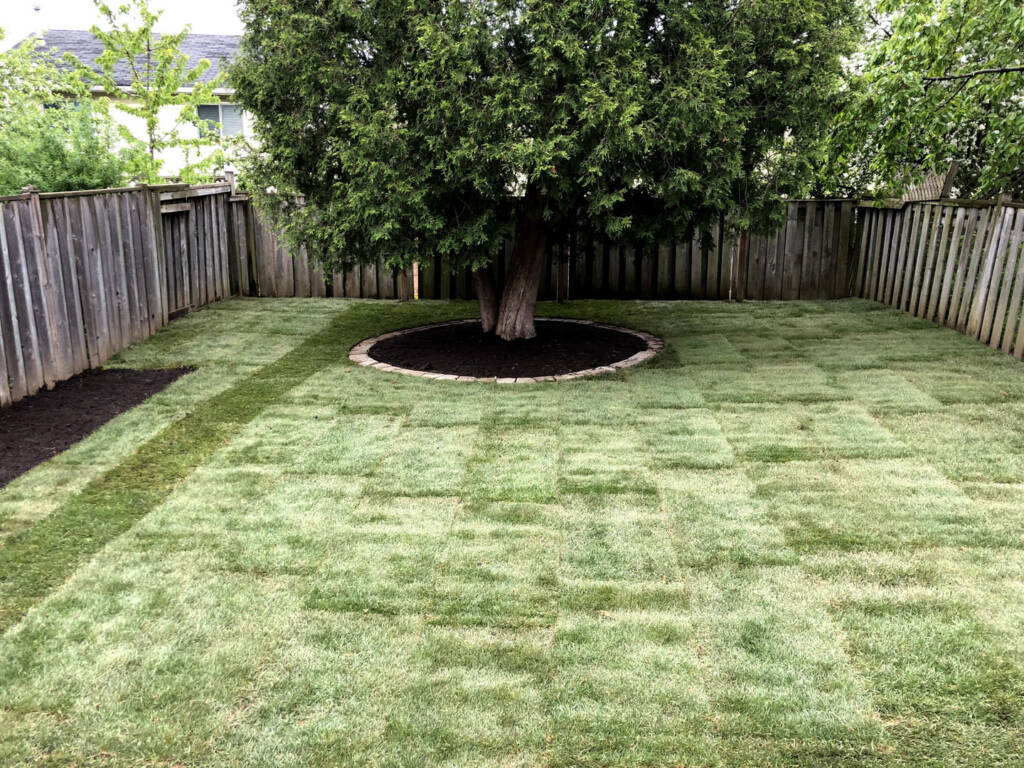Sodding New Lawn Properly
by siteadmin

A well-kept lawn is an integral component of your property's aesthetic appeal and can significantly increase its resale value. Clarksville TN Landscaping Service will not only apply new sod to your lawn but will also teach you how to care for your new lawn once the sod installation is complete.
Preparing your site for sodding, including controlling weeds and amending soil before doing so, is paramount to its success. After sodding has taken place, proper care should be taken to maintain and care for your new sod and grass.
Benefits
A lush lawn is an excellent way to instantly boost your home's curb appeal and increase its value. Plus, having a green space around you for family and guests to relax on will make everyone more comfortable.
Depending on the type of grass you select, seeded lawns can take anywhere from one month to two years to establish and develop. This can be an inconvenience for homeowners who are eager to see their ideal yard come true.
Sod can quickly transform a desolate area into an inviting carpet of green grass. It can be installed year-round, even during mild climates during wintertime.
Both seeds and sod require proper soil preparation before planting, but seed offers a wider selection of varieties to choose from. This gives you more freedom to find the ideal grass variety for your particular environment.
Preparation
Laying new sod is an efficient and fast way to revitalize your yard, but it requires meticulous preparation in order for the grass to take root and establish quickly.
Start by clearing away any existing weeds and grasses from your lawn area. Doing this will prevent clumps of dead grass from decaying and creating an uneven or patchy lawn.
Next, spread and level a thin layer of topsoil over the lawn at about three inches thick. This will keep the soil loose, making it easy for new sod to take root.
After applying a turf starter fertilizer high in phosphorus but low in nitrogen and potassium, you may add sulfur or agricultural lime to adjust your soil's pH if necessary.
It's wise to get a soil test done, as this will inform you what nutrients your soil requires for optimal health and nourishment. Knowing this information allows you to know which amendments should be applied and how much of each nutrient is necessary.
Installation
Sodding your lawn is the quickest way to give your yard a new, vibrant look, transforming neglected areas into lush green havens. But before you lay the sod, there are some essential steps you'll need to take in order to ensure it's installed correctly.
Before beginning this process, you'll need to clear away any old grass, weeds or debris so your new lawn has the best chance at rooting deeply into the soil. Doing this helps guard against fungus, disease and other issues that can develop without proper preparation of the soil.
Start by using a manual or power tiller (available at tool rental outlets) to break up the existing lawn and loosen plant roots. Do this in several passes, alternating directions, so your soil is thoroughly broken up and ready for new sod installation.
Next, lay out your sod in even rows. Each piece should be rolled flush with its adjacent piece but not overlapped or stretched.
Care
Proper site preparation, using proper installation techniques and caring for new sod and grass after it has been laid down are critical elements in achieving long-term success. Neglecting to do so may result in dead patches, wilting or fungus issues.
The initial 14 days after sod is laid are crucial for root establishment. Water early in the morning and space out your watering sessions evenly throughout the day, only watering enough to moisten the soil.
Watering too frequently can create soggy soil and invite fungus that will eventually kill the roots. Watering during the evening hours is discouraged, as standing water on grass can promote disease and fungus growth.
Once the sod is established in the soil, switch to an intermittent but thorough watering program. Wetting the soil down to a depth of 6 inches once every 5-10 days during drought periods should be sufficient for most soil types.
Apply a starter fertilizer that is low in nitrogen but high in phosphorus to help the sod establish strong roots. Spread this granular material onto the fresh topsoil with a spreader.
Clarksville TN Residential Landscaping
Clarksville TN Landscaping Service
Contact Clarksville TN Landscaping Service
A well-kept lawn is an integral component of your property's aesthetic appeal and can significantly increase its resale value. Clarksville TN Landscaping Service will not only apply new sod to your lawn but will also teach you how to care for your new lawn once the sod installation is complete. Preparing your site for sodding,…
Recent Posts
- Premier Pest Control Services in Chesterfield, MO
- Premier Pest Control Services in Chesterfield, MO
- Kansas City Pest Control Enhances Pest Management Services in Overland Park
- Kansas City Pest Control Enhances Pest Management Services in Overland Park
- Northwest Refuse Service Expands Premier Dumpster Rental Services Across Maryland
